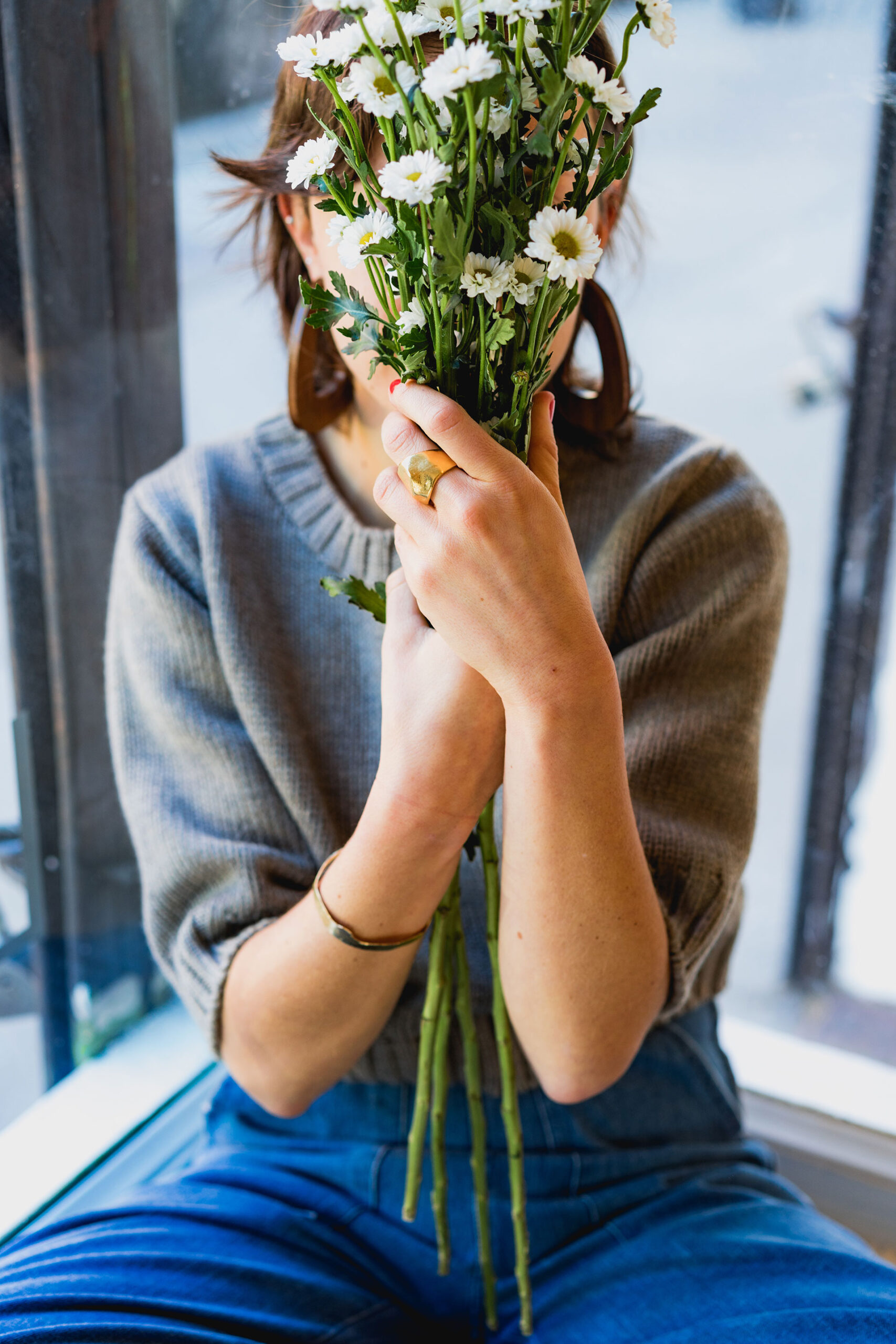£36.00 – £86.00
Why we like this variety:
For a beautiful dwarf gunnii alternative, look at our gorgeous Eucalyptus gunnii ‘Azura’!
Possessor of the much-sort-after, classic cute, round, silvery-blue leaf in the juvenile phase.
The Blue Ice Cider Gum is an extremely hardy and versatile variety. Like most Eucalypts, as the plant matures the juvenile foliage is lost in favour of the elongated adult leaves, so prune it if you want to maintain those lovely round leaves for floral art or keep it as a more manageable tree or bushy garden shrub.
Hop across to the ‘How to Use’ Tab to see how this species can be enjoyed or used in the landscape or garden – such as growing in a pot, as a bushy shrub, standard tree or for cut foliage etc.
Nip over to the ‘Planting and Soil’ Tab to see this Eucs preferred growing conditions– its likes and dislikes and how you can keep your tree in tip top condition.
The Trivia Tab is just that!! Notes for the nerdy types and botanists etc.
Blue Ice Cider Gum – Eucalyptus gunnii divaricata is a member of the GUNNII group of Eucalypts. E. gunnii is the ‘species type’ for this group, but there are several ‘cousins’ – each with their own ‘personality’, that is – they have subtly varying characteristics making them different from the ‘species type’. For more information on this, visit the Trivia Tab
For a similar species, but smaller in stature, check out the dwarf species Eucalyptus archeri Eucalyptus ‘Azura’ and Eucalyptus ‘France Bleu’
Note: Eucalyptus gunnii divaricata is also sold under a Belgian brand name. This is not a new or special variety, it’s straight Eucalyptus gunnii divaricata, being grown in the fatally round, smooth-walled pot (so a dodgy root-system*) and marketed under the brand name ‘Fresh Louis’. For full details on height and leaf form etc. for Eucalyptus gunnii divaricata read the section below labelled Biometrics.
*What do I mean by dodgy root-system? Any Euc grown in a smooth-walled pot with solid sides is forced into growing a spiral root-system, which means the Euc will very likely fall over when it is about 10-15 years old and weighing in at around 2 tonnes. I’ve seen it happen many times from potential customers needing to replace their mature fallen Eucalyptus with a new one that isn’t going to fall over. We only grow air-root-pruned Eucalyptus. Our Hardy Eucalyptus trees have a healthy, radial root-system which produces a safe and stable tree once planted in the ground. Click here to read more about the amazing science of air-root-pruning.
Shoots ‘n Leaves: Very ornamental foliage. Young shoots and stems are silvery, icy blue.
Juvenile leaves are a most striking waxy silvery-blue colour.
Adult leaves are lanceolate, elegant, more elongated than the juvenile form, in rich silvery blue-green
Bark: Smooth bark in grey, cream, green or sometimes pinky-brown, flaking off in large pieces, mid-late summer, to reveal new bark in shades of yellow/green or creamy grey.
Flowers: Fluffy white flowers are often produced January/February in the UK.
Leaf Aroma: Strong fruity, typical Eucalyptus aroma.
Rate of Growth: Fast at around 1.5-2.0 metres per year.
Height in maturity, if left unpruned: after about 15-20 years, the Blue Ice Cider Gum could reach approximately 15 – 20m. Having grown several at the nursery since 2010, we have found that Eucalyptus gunnii divaricata is not as chunky as its cousin Eucalyptus gunnii. The trees did not lay down as much fibre i.e. didn’t acquire the same thickness of trunk. However, they did reach the same height. In our view, Eucalyptus gunnii divaricata is best grown for its juvenile foliage and kept as a pruned bushy shrub or shrub-on-a-stick, lollipop standard.
Easy to keep smaller by regular pruning. You have two key dates for pruning.
Click here for further advice on pruning, which can be found in our Guidance Notes
Click here to visit our pruning video
To receive monthly pruning and aftercare advice, sign up to our Gumnut Club – its free and you can unsubscribe at any time. To subscribe – just call or ping us an email to [email protected]
If pruned, Eucalyptus gunnii divaricata can be trained to form a bushy screening tree, a lollipop standard or a multi-stemmed bush like a Pittosporum. Responds well to coppicing and pollarding, when large enough to tolerate the pruning and done at the right time of year, which is March.
When not to prune: Unless you are growing for cut foliage, please refrain from voluntarily electing to prune your Eucalyptus from August through to February; it can kill it.
Hardiness: Good hardiness rating, root-system should be happy down to around -14 to -16°C, once mature, and down to -18 °C for brief periods. Hardiness improves with age; young trees are more susceptible to frost damage than their adult counterparts.
Hardiness in Eucalyptus is governed by
For more information on how to increase the winter hardiness of your Eucalyptus – click here to see our Guidance Notes. These notes on how to help your Euc become more hardy in your garden setting are quite long.
I’ve been told they are ‘not for the faint-hearted’! They are meant to be quite all-encompassing and well-intentioned. You can always skip to the last page to look at the salient points!
Planting Position and Soil Preference
Very tolerant of a wide range of growing conditions, including those that are intermittently waterlogged/prone to flooding, as well as normal to dry soils and those of poor/low fertility. Enjoys full sun in an open position with no shade overhead and a moderately fertile neutral-acid soil. Our E. gunnii subsp. divaricata grow exceptionally well on our terrible winter-waterlogged/summer-arid, slightly alkaline clay ground.
Requirements:
Recommendations:
How to use in the landscape and/or garden:
How to grow or train it to get the best out of it: Eucalyptus gunnii subsp. divaricata is a good choice for shrubberies, growing in containers as a multistemmed bush, cut foliage plantations.
Growing a full-sized standard: planting the tree and running away is an option, but it won’t necessarily give you the best results.
We suggest you maintain a leading shoot and tip prune the lateral shoots to encourage bushiness. Keep all the sides shoots as they are building up the strength of the main trunk.
For more, see our guidance notes for growing specimen Eucalyptus in our Help and Advice section.
For monthly emails on how and when to prune and care for your Eucalyptus, sign up to our Gumnut Club and we’ll send you the Bush Telegraph – it’s totally free and you can unsubscribe at any time.
Growing shrub-on-a-stick clipped standard: this is an opportunity to grow a Eucalyptus in a confined space like a courtyard and also control its overall size. You can produce a small tree on a trunk with a height of anywhere between 2.4m (8ft) and 4m (12ft). Prune back growth every March 18th or thereabouts and tip prune the annual growth back by up to 90% at the end of May. Light tip pruning can be done again during July, but no later. Don’t prune from August through to February.
Growing a multi-stemmed bush or tree. Eucalyptus gunnii subsp. divaricata responds well to coppicing, once it has attained a trunk of some 125 mm in diameter and readily produces a multi-stemmed specimen. Why would you want to do this?
To create:
REMEMBER: No grass, no weeds and a thick boring bark chip mulch, to a depth of 150 mm (6 inches) are essential to assist with good establishment. Our research trials have demonstrated that grass around the trunks of newly planted Eucalyptus can prevent the trees from quickly establishing and also completely stop them from growing.
Pot Culture outdoors: Eucalyptus gunnii subsp. divaricata can be successfully grown as a multi-stemmed shrub in a container provided you are prepared to pot on at the recommended intervals and to supply it with sufficient water and food during the growing season.
Always keep pot-grown Eucalyptus in the air-pot container system for healthy and happy trees.😊 They do not thrive in smooth-walled containers ☹
Click here for information on how to successfully grow Eucs in pots, visit our Blog entitled ‘How to grow a Eucalyptus in a pot and keep it alive!’
Hedge-Screens: Eucalyptus gunnii subsp. divaricata can be grown as a loose billowing hedge-screen as it readily produces sub-lateral shoots – i.e. branches off the side-branches and finds no problem in becoming bushy. This is unusual for most Eucs.
Always prune your hedge-screen March 18th and maintain a profile like a capital ‘A’. That is broad bottom, narrow shoulders and a flat head. This allows light to all parts of the hedge and keeps it bushy. If you let your hedge develop into the shape of a capital ‘V’, its bottom will open up…not a great look!
Floral Art: Eucalyptus gunnii subsp. divaricata produces excellent cut foliage for Flower Farmers and floral art
Firewood Production: Eucalyptus gunnii subsp. divaricata is not on our selected species list for Biomass or Firewood.
Do give us a call on 01905 888098 if you would like to discuss growing firewood with one of our consultants
Rural/Agricultural:
Ecology:
Environmental:
To make this work, we recommend that:
Drying up wet soils
Like its cousin straight Eucalyptus gunnii, Eucalyptus gunnii subsp. divaricata does enjoy moisture at its roots over the summer months. We have it growing at Grafton Nursery on our swampy, heavy, yellow clay soil. This species grows well for us.
Eucalyptus gunnii subsp. divaricata is very at home in moist soils, such as a draining clay, draining peaty/loamy soils and draining sandy loams. It must be remembered that Eucalyptus are not aquatic like a Mangrove, but several species tolerate flooding for up to 6 months of the year in their native lands. This is a great species to help you regain the use of intermittently boggy ground.
If you have un-usable winter-wet land, planting a group of swamp-tolerant gums will help towards draining an area of ground. The timber could possibly be harvested to yield a crop of firewood logs too, if coppiced every 6-8 years.
Sustainable Drainage Systems aka SUDS Needs trialling, but planted singly or in groups, Eucalyptus gunnii subsp. divaricata will most likely draw on drain water percolating into swales or similar. Coppice or pollard every few years if you need to control the overall height of the trees. Eucalyptus draw on ground water for twelve months of the year, unlike willows, which lie dormant for 5 months through the winter.
Tolerant of cold and exposed growing environments inland Eucalyptus gunnii subsp. divaricata will grow in open fields and pasture, once established.
We recommend
Tolerant of poor stony soils once established Eucalyptus gunnii subsp. divaricata does not require a rich soil and can survive in poor, stony soils. Tolerant of arid environments, poor stony dry soils once established. It is essential that your Euc. is given our recommended quantity of water for its first 2 growing seasons in your grounds, during its establishment phase before you abandon it to its fate. The tree needs to establish a good, deep root system before it can survive in dry, challenging conditions. No grass, no weeds and a thick bark chip mulch, to a depth of 150 mm (6 inches) are essential to assist with good establishment. Growth on impoverished soils will always be reduced.
Botanical Name: Eucalyptus gunnii var. divaricata. Family: Myrtaceae
Common Name: ‘Blue Ice’ Cider Gum
Status: Evergreen Tree
Origin: A species of Eucalyptus endemic to Tasmania, occurring on the plains and slopes of the central plateaux to around 1100 metres, with isolated occurrences south of Hobart.
Lignotuber: it has one, which is a good thing! Eucalyptus gunnii var. divaricata will regenerate off the lignotuber if cut down by man, beast or nature. It also produces many shoots from epicormic buds lying dormant beneath the bark higher up the tree; so Eucalyptus gunnii var. divaricata will respond extremely well to both coppicing and pollarding practices, once large enough to tolerate it.
What is a lignotuber? Click here to see our Blog post on the subject https://www.hardy-eucalyptus.com/lignotuber-on-toast-anyone/
Is Eucalyptus gunnii subsp. divaricata actually different from Eucalyptus gunnii?
We definitely think so at Hardy Eucalyptus, but here is what the boffins at Euclid have to say on the subject:
Copied from EUCLID on-line Eucalyptus rescource. “In a recent paper (Potts et al 2001) the identity of Eucalyptus gunnii subsp. divaricata as a recognizable taxon at this rank has been championed. It is distinguished from subsp. gunnii by the more glaucous branchlets, juvenile leaves, adult leaves, buds and fruit; the broader crown leaves; more cylindrical fruit; greater retention of juvenile leaves in the crown; differing chemical composition of leaf oils and leaf waxes; and a more rounded crown. At the same time it is acknowledged to grade clinally into other recognizable groups within the E. gunnii – E. archeri complex.
In EUCLID we have not yet separated the two subspecies of E. gunnii.
We have some difficulty separating specimens in the herbarium because of the existence of cline-forms in addition to the two described taxa. The reader is directed to the excellent paper referred to above for further information. Eucalyptus gunni subsp. divaricata is listed as “Endangered” under the Australian Government Environment Protection and Biodiversity Conservation Act 1999 (EPBC Act). More information may be found at this web address:
http://www.environment.gov.au/cgi-bin/sprat/public/sprat.pl
Origin of the name Cider Gum: This variety produces a sweet sap which can be tapped in a similar way to maple syrup. We have read that the First Nation People of Australia ferment this liquid to produce a cider-like alcoholic beverage.
Meaning of the name: named after the most eminent Tasmanian Botanist Ronald Campbell Gunn – see the last paragraph on this page
Eucalyptus gunnii: after Ronald Campbell Gunn (1808–1881). In 1829 Ronald Gunn migrated to Tasmania and in the same year was appointed Superintendent of Convicts for north Tasmania. In 1836 he took up a position of police magistrate at Hobart and then in 1839 a position as private secretary to the Lieutenant-Governor, Sir John Franklin. Gunn resigned his position in 1841 to take charge of an estate in northern Tasmania and spent the next 14 years investigating the flora and fauna of Tasmania. Gunn was widely liked and highly respected and has been rated by many as the most eminent of Tasmanian botanists.”
Origin of Name: ‘divaricata’ Botanically this means ‘of spreading or straggling habit’ but this is referring to how it grows in the wild. As a trained garden specimen, it is quite handsome!



Tel: 01905 888 098
Monday-Friday, 9.00am-4.00pm
Grafton Nursery,
Worcestershire
(Visits by appointment)


We’re here to help you choose your Eucalyptus
We’ll also email you with expert seasonal advice for
your Eucalyptus & exclusive offers. No spam – just Eucalyptus.
You can opt out at any time. Click here to see our privacy policy in full.